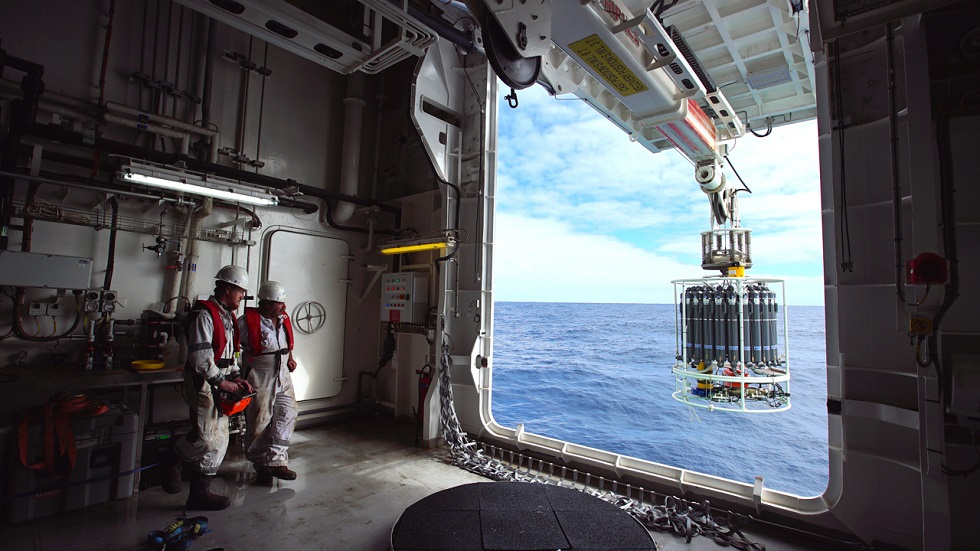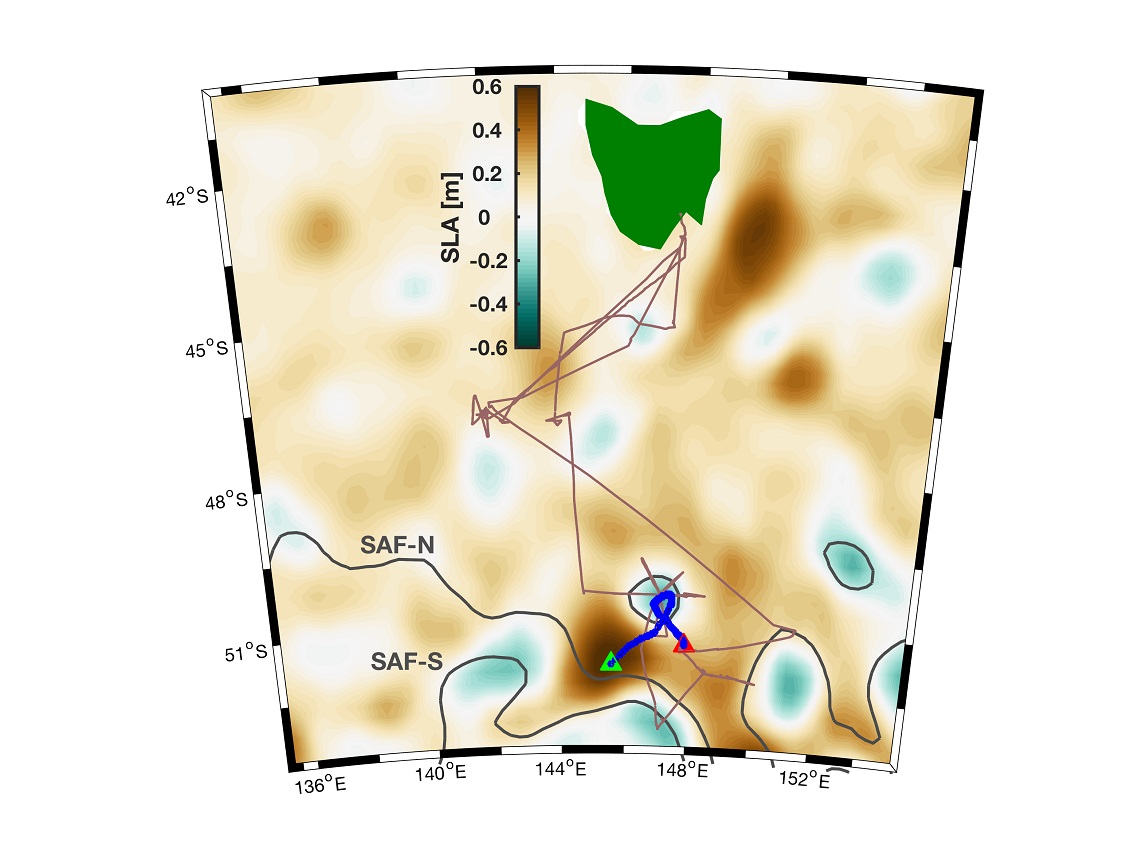
Large ocean eddies – the marine equivalent of cyclones - play a much greater role than previously thought in transporting cold water from the subantarctic to warmer oceans to the north, new IMAS-led research has found.
Southern Ocean eddies were already known to contribute to the exchange of heat across the Antarctic Circumpolar Current, helping to moderate the global climate as cold water originating in the subantarctic circulates around the world’s oceans.
But a new study led by IMAS PhD student Ram Patel, published in the journal JGR Oceans, has found that eddies can transport two to three times more heat and salt than previously thought.
The enigmatic eddies vary in size between 10 and 100 kilometres in diameter, rotating clockwise as they trace an erratic path across the ocean before slowly petering out.
Unlike cyclones, ocean eddies can last for months.
They’re common in the Southern Ocean along the Subantarctic Front (SAF), where polar waters meet warmer seas and the Antarctic Circumpolar Current interacts with seafloor topography.
 Mr Patel collected samples from a Southern Ocean eddy south of Tasmania over a number of days during a voyage of the MNF research vessel Investigator, combining the data with satellite observations of almost 2000 eddies between 1993 and 2014.
Mr Patel collected samples from a Southern Ocean eddy south of Tasmania over a number of days during a voyage of the MNF research vessel Investigator, combining the data with satellite observations of almost 2000 eddies between 1993 and 2014.
“This is the first time that the physical properties of an eddy in the Southern Ocean south of Tasmania have been studied in detail,” Mr Patel said.
“The eddy that we observed undertook a 371-kilometre journey over two-months, travelling north for 36 days before turning westward and then southeast back towards the SAF before dissipating. (Image, above, shows the eddy's path in blue, south of Tasmania)
“We calculated that the amount of heat and salt that the eddy carried into more northerly waters was about two and a half times more than previously reported.
“This finding suggests that more than 20 per cent of the heat and salt transferred from south to north is transported by Southern Ocean eddies, considerably more than the amount calculated by previous studies based on limited observations.
“While we already knew that eddies had an impact on the global climate, this is the first time that we have been aware of the full extent of their influence.
“As eddy activity is expected to increase as the climate changes, these processes could have a substantial impact on the amount of heat and salt transported into the Southern Ocean, with consequent implications for the future global climate,” Mr Patel said.